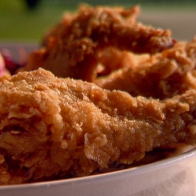 Failing to prepare is preparing to fail. Most of us have heard this maxim at some point, but when on raw food diet, preparation is imperative. It is a critical mistake to underestimate the time needed to balance the all tedious yet rewarding aspects of the raw food lifestyle. Our general culture doesn’t adhere to the natural world’s rhythms, so the speed in which we do things maybe foreign to our bodies, but our minds, by a certain age, tend to keep pace with the unnatural industrial rhythm.
Failing to prepare is preparing to fail. Most of us have heard this maxim at some point, but when on raw food diet, preparation is imperative. It is a critical mistake to underestimate the time needed to balance the all tedious yet rewarding aspects of the raw food lifestyle. Our general culture doesn’t adhere to the natural world’s rhythms, so the speed in which we do things maybe foreign to our bodies, but our minds, by a certain age, tend to keep pace with the unnatural industrial rhythm.
Most of our teenage and adult life, food is marketed as something that should be quick and easy. Even when dining out or waiting on a home-cooked meal, food always needs to come out in a timely fashion or grumblings from patrons will come towards the cook in no-time. Because of this drive for food to be quick and easy, we sometimes, unconsciously, put that same impatience unfairly upon ourselves resulting in frustration and excuses.
Having success on any diet, especially a raw diet, requires a few key adjustments to one’s lifestyle which will undoubtedly lead to the benefits that all diets claim to have.
I. Energy Requirements
First, one should figure out how how much energy they need to consume to power through the day activities. This is a vital step because most responsible diets encourage not only better food choices, but the implementation of vigorous exercise; any diet that claims health benefits sans exercise should be avoided.
To figure out how much energy is needed for one’s daily activities, the best way to go about it is documenting one’s schedule for a week or two. This documentation will serve as a template for measuring one’s total daily energy expenditure (TDEE) or “maintenance level.” The term maintenance level just gives a rough estimate of how many calories are needed to sustain one’s activity level.
The most accurate way to determine the calories needed to sustain activity levels is to first understand what the Basal Metabolic Rate (BMR). One’s BMR is the rate at which the body uses energy while at rest to keep vital functions going, such as breathing and keeping warm. Factors such as height, weight, age, and sex, when multiplied with one’s BMR, will give an accurate determination of one’s TDEE.
There are two effective models for measuring one’s caloric needs, The Harris-Benedict and Katch-McArdle. To use these two models we have to keep in mind a couple of simple conversions: 1 inch = 2.54 cm; 1 kg = 2.2. LBS. Additionally, here is the activity multiplier that gives a approximate estimate of human physical activity levels (PAL):
Sedentary = BMR X 1.2 (little or no exercise, desk job) Lightly active = BMR X 1.375 (light exercise/sports 1-3 days/wk) Moderate active = BMR X 1.55 (moderate exercise/sports 3-5 days/wk) Very active = BMR X 1.725 (hard exercise/sports 6-7 days/wk) Extreme active = BMR X 1.9 (hard daily exercise/sports & physical job or 2X day training, i.e marathon, contest etc.)
The Harris-Benedict equation is a formula that uses your BMR and then applies an activity factor to determine your total daily energy expenditure (calories). The only factor omitted is lean body mass. The equations are as follows:
Men: BMR = 66 + ( 6.23 x weight in pounds ) + ( 12.7 x height in inches ) – ( 6.8 x age in year )
Women: BMR = 655 + ( 4.35 x weight in pounds ) + ( 4.7 x height in inches ) – ( 4.7 x age in years )
Then multiply one’s BMR by the aforementioned activity factors. For example, a sedentary woman that is 30 years old, 5’4 tall, and 140 pounds, her BMR is 1423. Multiply 1423 by 1.2, and her TDEE is 1707.
The Katch-McArdle formula differs from the Harris-Benedict formula in that it takes lean body mass into consideration. So, this calculation is only possible if you know your percentage body fat. It also doesn’t divide genders and breaks as follows:
BMR (men and women) = 370 + (21.6 X lean mass in kg) or BMR = 370 + (9.79759519 X Lean Mass in pounds)
So, if a moderately active man is 30 years old, 217 pounds, and 16.7% body fat percentage, his BMR is 2141. Multiply 2141 by 1.55, and his TDEE is 3318.
Calorie counting is wise only in two instances: when starting one’s transition from cooked food to raw and if there is a specific weight gain or loss goal. Counting calories is a crutch, and if you seek to thrive on a raw food diet, there has to be adherence to the rhythms of life and attention paid to yourself, otherwise the diet itself will consume your life.






